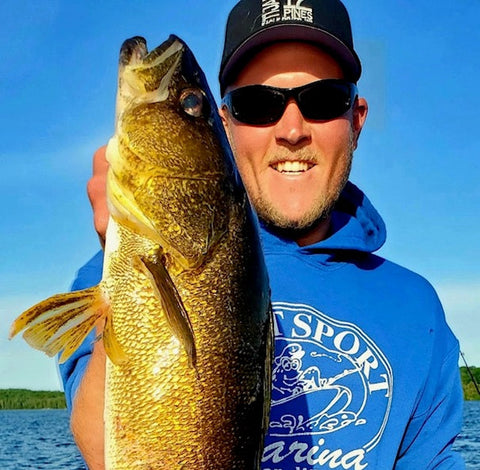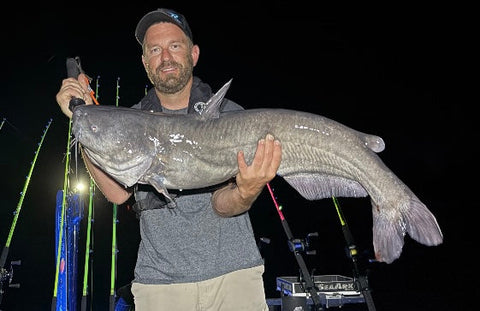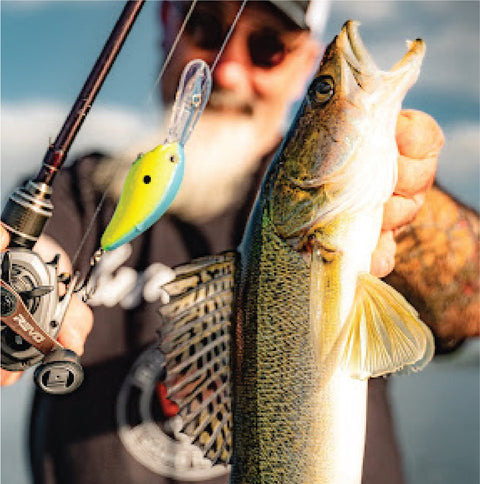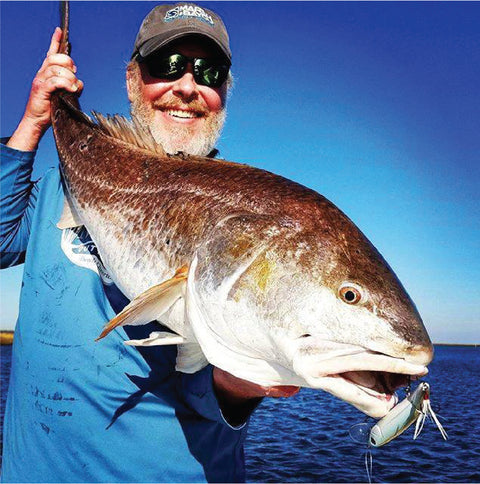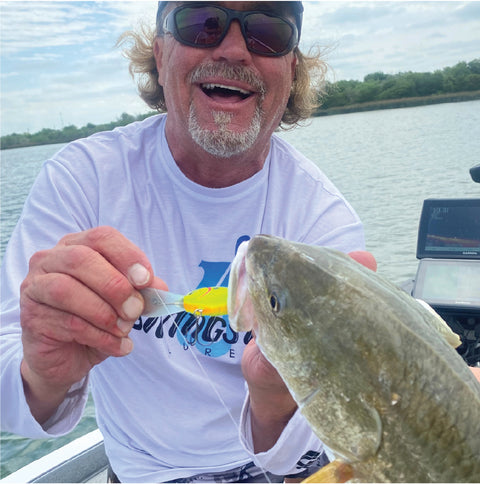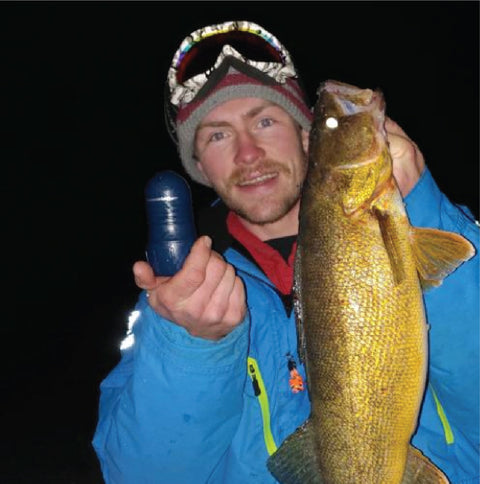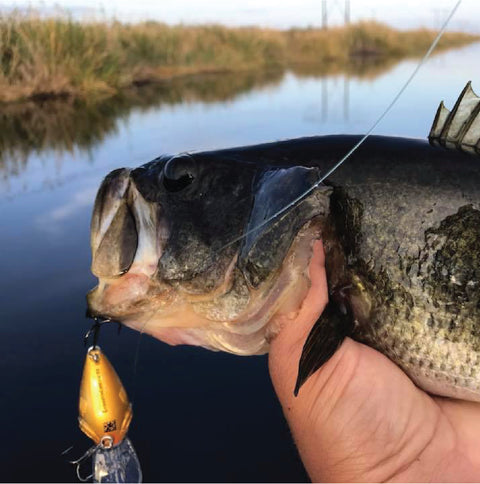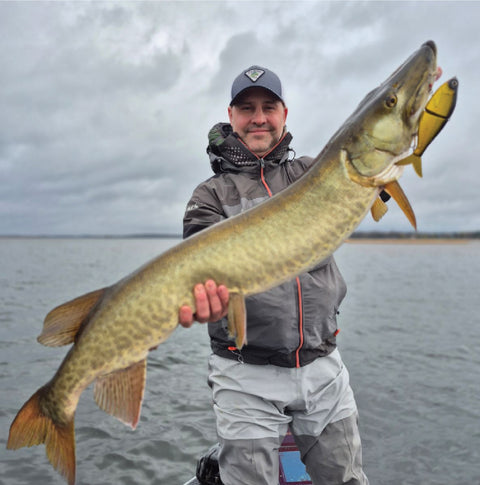Musky Fishing with Forward-Facing Sonar

Modern technology is rapidly transforming the sport of fishing. Gone are the days when down-scan sonar was considered cutting-edge. The emergence of forward-facing sonar has reshaped the musky fishing landscape, sparking heated debates and generational divides within the angling community. While some purists argue that the technology undermines the traditional spirit of the sport, its capabilities have proven impossible to ignore.
Concerns about forward-facing sonar often stem from valid fears regarding musky sustainability. However, like any tool, the impact of sonar depends on how it’s used. When applied responsibly, it can offer incredible insights into musky behavior, helping anglers fish more selectively and efficiently, with less stress on the resource.
Since the early days of Panoptix, the use of forward-facing sonar has evolved from simply locating fish to becoming a comprehensive tool for patterning behavior, understanding forage dynamics, and reading water column movement in real time. For many serious musky anglers, sonar has become an indispensable part of daily decision-making—offering live feedback on baitfish, water conditions, and predator response.
Regardless of how forward-facing sonar is integrated into a musky strategy, there are several proven techniques that can maximize its effectiveness. The following breakdown highlights key tactics, suggested settings, and lure strategies to help anglers get the most from this powerful technology.

Forward-Facing Sonar Tactics for Musky
Enhancing the Figure-Eight
One of the most impactful uses of LiveScope is enhancing boat-side presentations, particularly the figure-eight. By placing the transducer in Forward Mode and aiming it just off the bow, anglers can watch both their own lure and that of their partner as it approaches the boat. This real-time view reveals musky behavior—including deep followers invisible to the naked eye—before the bait reaches the figure-eight zone.
Typically, the lure becomes visible about 20 feet from the boat, offering a critical window to prepare for a high-performance figure-eight. The technology also helps identify when a musky isn’t rising to the bait. If a fish remains low, anglers can adjust instantly by plunging the rod tip and working the eight deeper—often the difference between a miss and a boat-side strike.
Recommended Settings for Figure-Eight Fishing:
-
Mode: Forward
-
Range: 50 feet
-
Color Palette: Amber
-
Color Gain: 80–90
-
Unit Gain: 65
These settings deliver optimal visibility for evaluating the size, movement, and posture of approaching muskies. Anglers should adjust settings based on their units and conditions.
Sharpshooting: Casting Directly to Marked Fish
Sharpshooting involves casting directly to a musky identified on sonar, most effectively done using Perspective Mode. This top-down view provides a wide field of vision, perfect for scanning open water, flats, or suspended fish.
Mounted on either the trolling motor or a dedicated pole, the transducer can be actively rotated to sweep the water column. While Perspective Mode doesn’t offer the detail of Forward Mode, it provides enough clarity to distinguish muskies—appearing as long, stretched shapes—from surrounding baitfish.
Though controversial, sharpshooting can be more selective than trolling. Rather than casting blindly or dragging baits through inactive zones, anglers can make precise presentations to known targets. This often results in quicker hookups, cleaner releases, and reduced pressure on non-active fish.

Sharpshooting Execution:
After identifying a musky in Perspective Mode, the cast should be placed slightly beyond the fish. Then, switching to Forward Mode allows tracking of the lure's descent and its interaction with the fish. Many anglers run dual transducers—one for broad scanning, the other for fine tracking.
LiveScope Settings for Sharpshooting:
-
Mode: Perspective
-
Range: 100 feet
-
Color Palette: Blue (Lowrance-style)
-
Color Gain: 80–100
-
Unit Gain: 75
Trolling with Forward-Facing Sonar
Forward-facing sonar isn't just for casting—it’s highly effective wh ile trolling. LiveScope allows anglers to monitor baits and scout for fish ahead of the boat, making trolling a dynamic and responsive approach.
ile trolling. LiveScope allows anglers to monitor baits and scout for fish ahead of the boat, making trolling a dynamic and responsive approach.
Monitoring Baits in Perspective Mode:
By pointing the transducer toward the stern in Perspective Mode, anglers can track trolling baits running in the top 15 feet of the water column. Muskies appear as defined red shapes trailing behind red-colored lure signals. Adjustments in speed or direction can be made in real time to trigger follows into strikes.
Scouting Ahead While Trolling:
Anglers can also point the transducer forward to scout up to four boat lengths ahead. When a musky is spotted, the boat can be steered to guide baits directly into its path. This method is especially effective for shallow or mid-depth trolling along weed lines and mid-lake humps.
Suggested Settings for Trolling:
-
Mode: Perspective
-
Range: 80–100 feet
-
Color Palette: Blue
-
Color Gain: 80
-
Unit Gain: 80
Best Muskie Lures for Forward-Facing Sonar: Why Livingston Lures Stand Out

When using forward-facing sonar, lure visibility is key—and not all baits are created equal. Livingston Lures offers a lineup of baits specifically engineered for sonar clarity, all marked as Forward-Facing Sonar Certified. These baits offer high-definition sonar returns, enhanced tracking, and optimized sound technology for real-time interaction.
For sharpshooting and suspended muskies, the Kraken and Magnus excel due to their fall rate, weight balance, and highly visible profiles. These features allow anglers to track them easily as they descend, maximizing time in the strike zone.

During boat-side maneuvers, larger baits like the Titan and Pounder provide superior sonar visibility throughout the figure-eight. Their size, movement, and sound signatures (thanks to Livingston’s EBS™ technology) make them ideal for turning followers into committed strikers.
Designed to extend time in the sonar cone and enhance visibility across a range of depths and techniques, Livingston Lures give anglers a strategic edge. In a pursuit where seconds count and precision is everything, that advantage can mean the difference between a heartbreaker and a hero shot.


